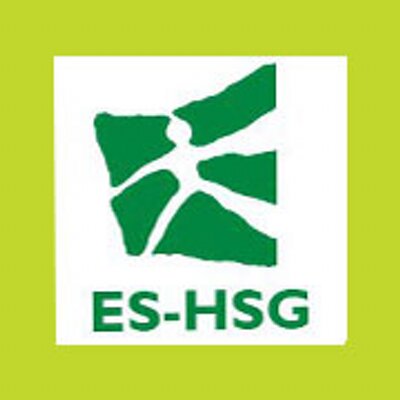- Innovation
Design Thinking Complex Problems
St Gallen faculty Rachel Brooks and Jennifer Hehn on how design thinking combines human-centricity and rapid prototyping for complex problem-solving
Jennifer Hehn, a lecturer at the St Gallen Executive School of Business, describes Design Thinking as “combining a human-centred approach with rapid prototyping techniques” for solving complex problems.
This is a natural progression in a world that is using Artificial Intelligence and widespread digitalization processes. There is a need to ensure we layer over these highly logical, electronically mechanised frameworks, an understanding of what humans actually need from them, and bring the flexibility to adapt to some of the inconsistencies and irrationalities that humans inevitably bring into situations.
Hehn continues: “Design Thinking is a way to solve problems, especially very complex problems, and it relies on techniques and methods from disciplines like psychology and ethnography in order to understand human needs. It can do this by integrating different perspectives and trying to look holistically at the problem. It gives non-designers a way to design their services and products and processes in a very systematic manner while still encouraging creativity and an innovative mindset.”
Jennifer Hehn is co-faculty with Dr. Rachel Brooks on a new program at St Gallen. Brooks explains that she became aware of the powerful value of Design Thinking while working with a large food multinational facing the complex challenge of trying to enable smallholder farmers in Latin America to thrive, while still running an effective and profitable supply chain. The issue was complex as there were so many different stakeholders involved, including international and local NGOs and various tiers of government.
………………………………………………………………………………………………..
Dates: 30 Jan–1 Feb, 2020 │ Format: In-class study
Location: St Gallen, Switzerland
………………………………………………………………………………………………..
The process the company took to find a solution was not a Design Thinking one however, and in hindsight Brooks sees that a much richer, more creative outcome could have emerged if the farmers’ needs had remained central to the solution process. As it happened, the company, in a way that is typical of large organizations, elected to follow a solution process that prioritized efficiency over effectiveness. They focused on identifying a set of KPIs by which to measure the impact of their involvement with the farmers, and fairly quickly the wider needs of the farming communities effected were distilled down to a handful of measured indicators.
Brooks reflects that “It was a really complex problem that required input from NGOs, from governments, and other stakeholders - which this company recognized and did, but the focus on this functional aspect really restricted them from becoming more creative. What Design Thinking could have done here is provided steps that they could have followed to foster creativity.”
One significant issue was that the farmers were leaving the countryside for work in urban areas, and Brooks explains, “If I could redo this situation with this company, I would imagine creating a Design Thinking question from the start that could be as simple as ‘how might we make staying on farms attractive for farmers?’” Brooks sees that this would have unlocked a huge pool of new creative thinking. “All of a sudden your potential solutions are magnified. They really explode. There's a lot of different directions that you can take, that go far beyond impact measurement. Once you have framed that question, Design Thinking then walks you through the process of both ‘need-finding’, which is leveraging the knowledge, and ‘feedback’ from the actual users - the farmers in this case - and other stakeholders on the ground.”
“You're able to leverage all of this knowledge, and instead of being overwhelmed by the information - and many companies do shy away from this because they see an enormous potential for lost time - Design Thinking offers a process to synthesize and use this information and to transcribe it into an interdisciplinary team, and create empathy for the different people affected by this challenge. Following that, you have the potential to do ideation, with a number of creativity-fostering techniques to identify enormous amounts of ideas, options, and possibilities.”
Design Thinking emerged as a business problem-solving process in the early years of this century, having been evolving as a purer design process since the mid-1950s. It was at the d.School at Stanford where it got traction in the wider commercial world. St Gallen is part of the SUGAR Network, a global initiative that connects numerous universities and Design Thinking practitioners.
While Design Thinking is founded on a five stage process (Empathise-Define-Ideate-Prototype-Test), Hehn sees the real richness of it lying in the cross-functional teams that it brings together to tackle these complex issues; “We hear all the time that interdisciplinary teams are important, or that diversity promotes this, that or the other thing, but the bottom line is that you have people on your team with a depth of knowledge on different issues and they bring entirely different perspectives and can see things that others might have missed. You're constantly supplementing each other's knowledge gaps.”
Brooks and Hehn’s three-day program ‘Creating the Agile Organization with Design Thinking’ takes the participant through the Design Thinking process, bringing to light key differences with other approaches to innovation, and then supports them in engaging with their own business challenges in small teams. A story-telling component helps others ‘Empathise’ with their teammates’ challenge and better understand the context, and ultimately break the problem down through the ‘Defining’ element, before jumping into the open space of ‘Ideation’. This leads to the rapid prototyping – and discarding failed concepts – that Hehn mentioned at the outset; feeding these back through the loop and testing again. It will be an intense 72 hours.
Our Executive Education programmes are characterised by its high level of relevance for current practical issues, by drawing on the latest results in research.
ARTICLES YOU MIGHT LIKE
VIEWPOINT
Cognitive neuroscientist, Lynda Shaw, explains how to understand and support intrapreneurs
DEVELOPING LEADERS QUARTERLY MAGAZINE AND WEEKLY BRIEFING EMAILS


































